I am not sure about that. It's a fact that the HMD&C from Elbit will only be integrated once all 36 have been delivered to India. Probably the same is true for integrating the Spice 2000 PGM, that is why India went in for the HAMMER kit at the last minute because that will come in useful in case the LAC goes active. Do not know if the towed decoy has been integrated as also the software enhancements to the RBE2 AESA radar. So the ISEs are a work in process with most of them IMO to be done only after delivery of all 36 aircraft.They had India specific modifications though
India-China 2020 Border Dispute - Military and Strategic Discussion
- Thread starter tarunraju
- Start date
- Status
- Not open for further replies.
More options
Who Replied?Bhadra
New Member
- Joined
- Jul 11, 2011
- Messages
- 11,991
- Likes
- 23,756
I tend to agree with that assessment...Depsang...
Synergy
New Member
- Joined
- Jun 27, 2020
- Messages
- 680
- Likes
- 2,074
Kudos to Argentina. just sink those fishing boats. problem solved.Illegal fishing by China is a major problem world over including India:-
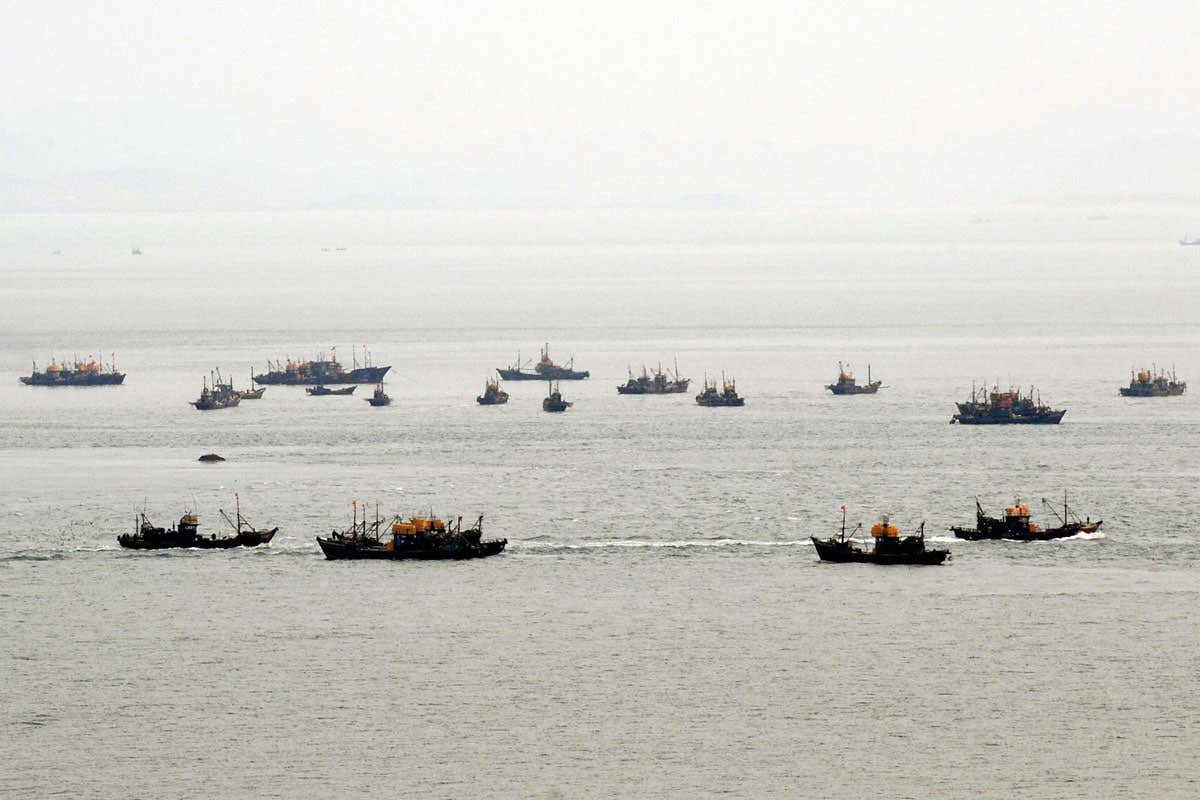
Hundreds of illegal Chinese fishing vessels spotted near North Korea
Satellite imaging has revealed hundreds of vessels from China fishing off the coast of North Korea, violating UN resolutions prohibiting such activitywww.newscientist.com

Chinese fishing boats took half a billion dollars of illegal squid from North Korea. Scientists used satellites to catch them out
Satellite technology and machine learning are helping track down illegal and environmentally damaging ‘dark fleets’ of fishing boats.theconversation.com
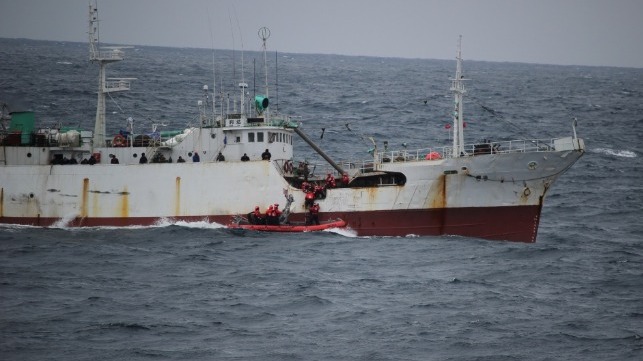
Report: China Ranks Worst on Global Illegal Fishing Index
Anindexlaunched in February scores countries according to their degree of expos...www.maritime-executive.com
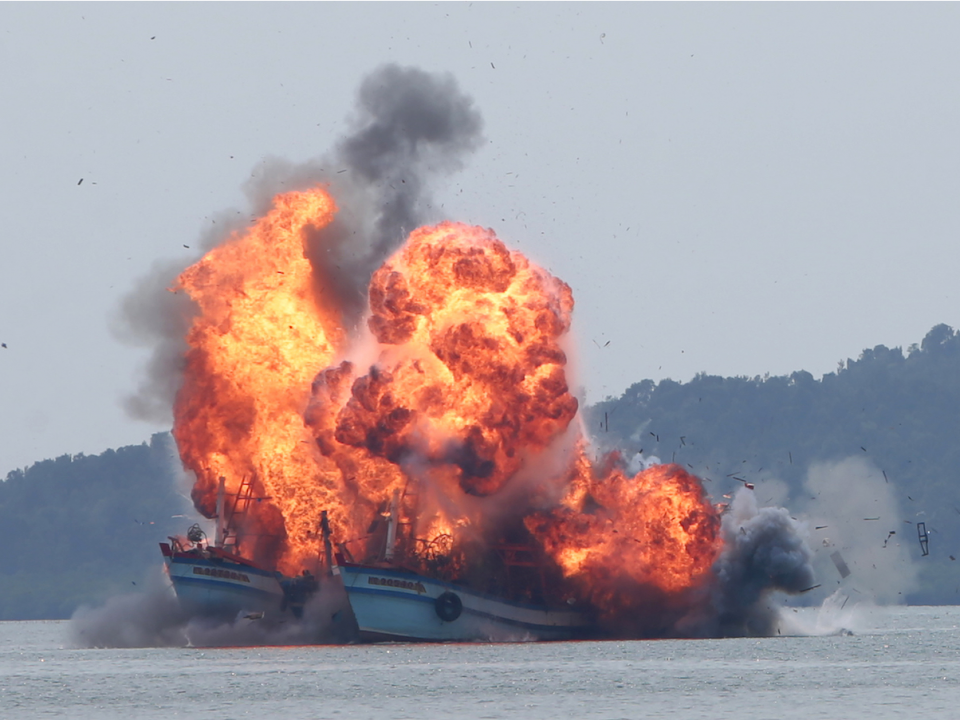
The US military is warning that China's fishing boats are bullies and could start a war on the high seas
Stringer China/REUTERSFishing boats depart Shenjiawan port in Zhoushan, Zhejiang province toward East China Sea fishing grounds, September 17, 2012.Chinesewww.businessinsider.in
Situation was so bad that in 2016, Argentina *sank* a Chinese fishing boat:-
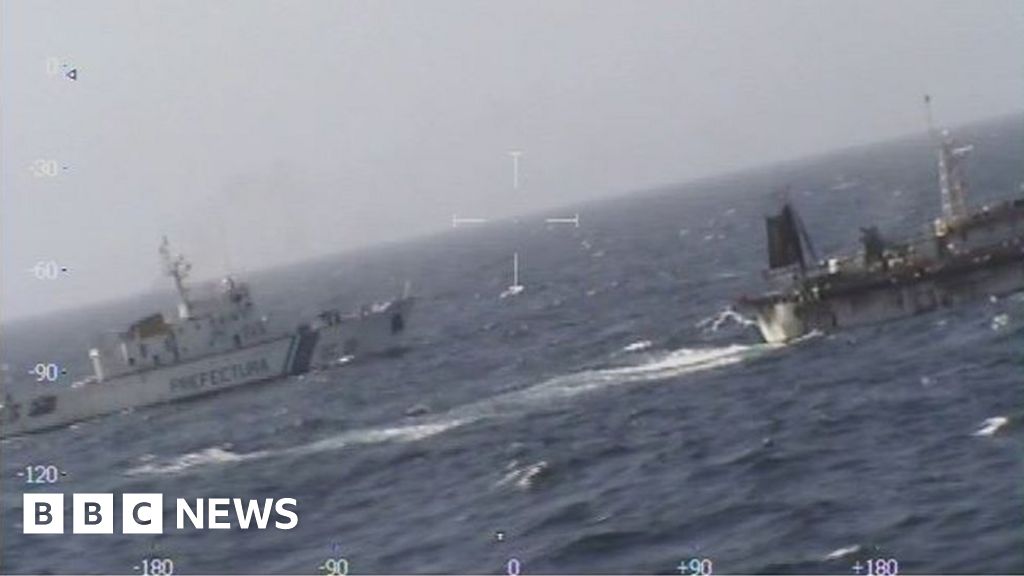
Argentina sinks Chinese fishing boat Lu Yan Yuan Yu 010
Argentina's coastguard chases and sinks a Chinese vessel which it says was fishing illegally in Argentine waters.www.bbc.com
Shameless machli chor cheen
Shashank Nayak
New Member
- Joined
- Nov 27, 2017
- Messages
- 5,153
- Likes
- 17,261
China hits Indian civilian targets in Cities with missiles, and India won't target its commercial shipping... ? Come on.. The only consideration America will get is that US flagged vessels won't be targeted.. Any commercial ship with lots of chinese on it.. is a fair target..Blocking Chinese merchant shipping, even if the IN is capable of doing it alone, which I think it can, will never be done by India unless it gets the US on board because of the global economic fallout. The rest of the world literally depends on Chinese industrial production to keep the wheels of commerce turning and IN action in blocking Chinese shipping will disrupt that global flow and cause economic disruption.
doreamon
New Member
- Joined
- Mar 24, 2019
- Messages
- 3,007
- Likes
- 15,164
agni 4/5 have a CEP of 10m - 80m ... If chinese attack civilians in our cities with missiles nothing stops us from blowing 3 gorge dam with few missile . one missile can carry 1000-1500 kg of war heads ..it does nt have to be nuclear.. i think that ll be enough . There are other dams as well...we dnt need huge number of missiles to vanish their cities with huge manufacturing power and someone need to say it in public nd convey them that we ll do it ... Its only a matter of political will . I think this is best solution for our number problem .I don't think that China will respond with nukes against a conventional missile strike by India because offensive conventional missile strikes are part of their war gaming. In fact during Doklam in 2017, commentators were half expecting the PLA to launch missile strikes against IA positions. The same could be expected during the current stand off.
And you are correct that the open source CEP e.g. for the Agni 3 is 40 meters at 3000 km. So you could have a 1.5 ton conventional warhead hitting a target with a CEP of 40 meters. Anyway conventional missile strikes by India is a moot discussion because India just does not possess the Agni 2 and 3 in the kind of numbers, hundreds, that would make sense to use them in the conventional strike role.
LETHALFORCE
New Member
- Joined
- Feb 16, 2009
- Messages
- 29,968
- Likes
- 48,929
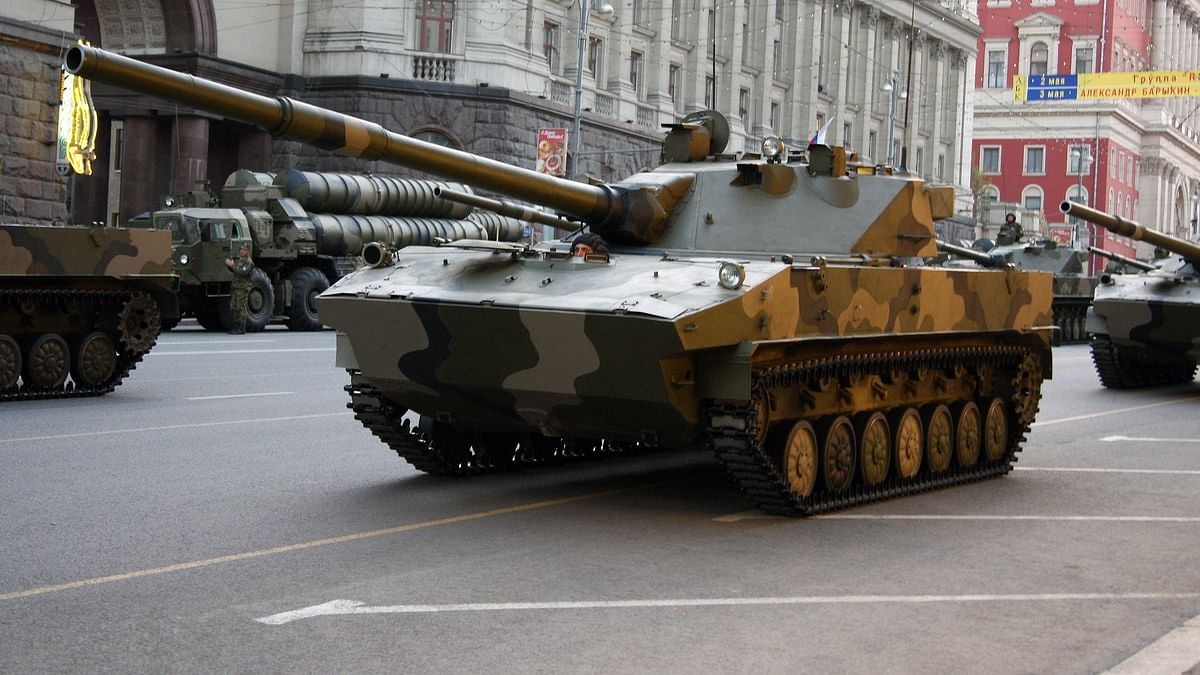
Russia offers India Sprut lightweight tanks amid stand-off with China
Russia's offer comes as China has deployed Type 15 light tanks while India has relied on the heavier battle tanks. Talks are on, but no immediate purchase is on the cards.
 theprint.in
theprint.in
Russia offers India Sprut lightweight tanks amid stand-off with China
- Joined
- Jan 14, 2020
- Messages
- 9,609
- Likes
- 84,139
LETHALFORCE
New Member
- Joined
- Feb 16, 2009
- Messages
- 29,968
- Likes
- 48,929

The U.S. wants Japan's help to close its 'missile gap' with China. Is Tokyo up for it?
After formally withdrawing from a landmark arms-control treaty earlier this month, the United States now hopes it can better counter its geopolitical rival China by closing what experts characterize as a yawning 'missile gap' with Beijing — and it may look to Japan for help.
The U.S. wants Japan's help to close its 'missile gap' with China. Is Tokyo up for it?
- Joined
- Jun 8, 2020
- Messages
- 341
- Likes
- 961
LETHALFORCE
New Member
- Joined
- Feb 16, 2009
- Messages
- 29,968
- Likes
- 48,929

China seeks new islands to conquer
Allies in the Pacific are worried that the U.S. and Europe are no longer reliable.
China seeks new islands to conquer
cereal killer
New Member
- Joined
- May 14, 2020
- Messages
- 2,146
- Likes
- 8,416
Agni 2 can strike 3 -4 capital cities of Chinese provinces with relative ease if we strike them from Arunachal. These provinces are Sichuan, Yunan, Shaanxi, Qinghai. All hell will break loose & Hans will be toast.Range of Agni ... Agni V is what we need.... if we are to hit at core of chennis...
View attachment 55363
View attachment 55364
Neil
New Member
- Joined
- Jun 23, 2010
- Messages
- 2,818
- Likes
- 3,546
That's a real possibility. But I haven't (yet) seen imaging confirming where the Chinese are at Depsang/what they're doing. And I've grown skeptical of some of the anonymous source reporting. Images we do have in Ladakh (outside Pangong) show the Chinese on their side of the LAC.
So thats a great map & @SimTack
both plotted the same camp in our report as well (3rd image shaded red circle) but when you try to scale it to a GIS/MAP you notice the lines very far apart, different interpretations, officially if you have a map, happy to see the LAC there
Bhadra
New Member
- Joined
- Jul 11, 2011
- Messages
- 11,991
- Likes
- 23,756
A so called tank of 20 tons with a 125mm gun is neither an Infantry carrier nor a Tank. It has been developed as "Anti Tank Platform" as Russian call it. It has been developed as an expeditionary platform that can be air transported and is also an amphibious platform. The tank can swim for six hours and use the main gun while in water.Sir please shed some light on...
what if T90/T72 will lead and Spruts will give additional fire support and will do flanking maneuvers?
and is there a chance to attach some era and an aps to it (I think Sprut comes with aps?)?
So Is this tank suitable for assault on Penang Tso Fingers from the lakeside amphibious assault? From the description, it appears to be so. If it can be used in Black Sea. The Caspian Sea and The Baltics, then I would say it can be used in Tengang Tso. A wave of twenty tanks each assaulting at midnight on Finger 5 and Finger Six with simultaneous land offensive will be a damn innovation. Chinese will be thrown back even from Srijap,
If the tanks are to be used in Depsang against 4 Highland Mechanised Infantry Division. then this is a tin can and can be best put behind a prepared tank hull-down emplacements to function as a tank and an Anti-tank platform mixed with BMP and Infantry missiles. Or carry out small limited maneuvers in conjunction with BMPs and truck-mounted Infantry.
What actually Depsand or Gogra or Hot springs would require is a potent platform like T-72 and T-90 which can face the Chine T-56 or T-59 variants and take a hit.
If the basic problem is mobility in high altitude than Spurt would be an untested horse. Then the only solution is to put 1400hp engine of Cumins into Vijayants and make those as galloping horses...
Nothing can be judged in the absence of what is doctrine for a light Tank...
Neil
New Member
- Joined
- Jun 23, 2010
- Messages
- 2,818
- Likes
- 3,546
India’s options around LAC: Going north with Brigadier RJS Dhillon
Many of our readers, by now, know about the exploits of Brigadier Rupinder (RJS) Dhillon(retired) as a daring paratrooper. However, a little-known aspect of him is that Brig Dhillon has an excellent “feel of feet” of the line of actual control (LAC) in Ladakh – all the way from the Karakoram Pass down to Galwan valley. His stint with the Ladakh Scouts gave him a unique exposure along the LAC and “across”!
He is one of the few officers who has personally visited the sites of our defeat in 1962, across the LAC, like JAK-I and JAK-II.
Against the backdrop of gloom along the LAC these days, we asked him about our options. As China’s People’s Liberation Army sits pretty in our areas, on the wrong side of the LAC, in several places, we have chosen the path of lengthy negotiations. Until now, except for Galwan, the talks don’t seem to have made any headway.
Retired senior officers are talking about either evicting them physically, with the obvious costs, or gaining bargaining leverage against the PLA, through other means. And these “other means” can only be a quick counterincursion into Chinese territory, elsewhere, which can then be bartered for our areas where they are currently squatting. This is what Lieutenant General HS Panag (retired) said in an article, sometime back.
Brig Dhillon has a prescription. We must realize that he is talking of tactical possibilities and not certitudes. He is not abreast of the current order of battle (Orbat) of the combatants. Nor is he privy to their plans. But this is what he would do if he has the resources and the authority.
The area under this study:

This is the subsector north (SSN), the most northern part of our area adjacent to the LAC in Ladakh. North of Daulat Beg Oldi (DBO) camp site lies the strategically vital Karakoram Pass, leading to China’s vital interests (Xinjiang Highway: G-219 and other infrastructure beyond) on the other side. And to the west-south-west, lies the Siachen Glacier, vital to our interests. (Illustration via Quint)
Brig Dhillon gives his perspective on gaining leverage against the PLA for restoring parity at the negotiations, as follows:
1. A coordinated and quietly built-up, multi-pronged series of incursions, overnight.
2. A move northwards from DBO, across the Karakoram Pass and beyond. This will point a dagger at China’s vital Xinjiang Highway (G-219). Dhillon, having personally served there, says, the Karakoram Pass is passable for BMPs and Ts (T-90s/T-72s).
3. An integrated battle group (IBG) consisting of:
a. One battalion less of two companies of BMP-borne mechanized infantry
b. One squadron of tanks.
c. One company of engineers. (Engineering effort, blasting, etc, maybe required on the approach to the Karakoram Pass, the last bit above the hitching point of about 300 feet below the pass. The pass itself doesn’t require any effort, on our side; perhaps some negligible effort on the Chinese side.)
d. One battalion of “footie footies” (infantry)
These can go across the pass and occupy a convenient feature on the other side. Then they will sit tight, forcing the PLA to react – either through an assault or through negotiations. This is one area where the Chinese simply cannot allow our presence for any length of time.
At the same time, the force shouldn’t be large enough to spook the Chinese over the tipping point and force them to go for all-out war.
4. The reserves to be held at DBO are:
a. One tank regiment (less one squadron); two BMP companies.
Here Brig Dhillon insists that BMPs are adequate for armoured in Ladakh and there is no need really to miss the “light tanks”, which are being suddenly discussed now. He says that during the time when they were testing high-altitude para operations in Ladakh, in the late 1980s, he had watched Gen Panag’s mechanised combat group in action across all kinds of terrain. That has given him the firm belief that BMPs would be adequate and effective for our purpose.
While the northern IBG goes across the Karakoram Pass, Brig Dhillon wants a simultaneous move down south. He recommends a company strength feint from our Burtse camp towards the Y junction. Noisy, but not engaging the enemy.
The real action should be in the form of a three pronged assault to interdict the PLA’s line of communications from their “new encampment” across the LAC, which serves as a firm base for all their troop movements towards our SSN area. Thus, if that line is cut off by us across the LAC, then their forces which have come into our side, at the Y Junction, would be cut off and vulnerable.
The three prongs would be:
1. A battalion sized move from DBO south eastwards.
2. A Company-sized move via our track junction (highly exposed with concealment of larger numbers difficult.)
3. Another two companies moving over Depsang-la, going down to the Chip Chap river and onwards into the Depsang plains.


He insists that none of these moves should be deep. The features occupied across the LAC should be maintainable by surface convoys (mules, vehicles), except for one stretch beyond the Depsang-la, which should be maintained by helicopters.
Next, he is absolutely insistent on close support from attack helicopters (Apaches). He says the army should request the government to prevail upon the Indian Air Force to go beyond their doctrinaire objections to close ground support operations. This is a prerequisite for success.
Stealth and surprise should be ensured through night movements, during the build-up stage. The incursion should be completed overnight, with prefab (pre-fabricated) concrete structures (for roofing and side walls) being carried to quickly build bunkers.
The right locales and features should be chosen to occupy, keeping in mind that in the mountains, a 9:1 or even 12:1 force ratio is required for the side attacking, to dislodge a fortified, dug in defending force.
This, if accomplished, will force the Chinese to respond. One, they can choose to attack and risk a spiralling escalation OR consider the restoration of status quo ante elsewhere along the LAC, where they have encroached into our areas viz., Pangong-tso, Y Junction, Gogra–Hot Springs, etc.
Others veterans, say that we simply do not have the strength today to match the PLA in the open.
Gen Panag, in his latest article, says: “In execution, it implies fortifying the DBO-Galwan Sector, Hot Springs-Gogra-Kongka La-Tsogtsalu sector and Marsimik La-Ane La-Phobrang-Fingers 1-3 sector with overwhelming resources that must have an inbuilt tactical counter-offensive capability. The defences and habitat should be of a permanent nature. These sectors should be prepared to fight even when isolated. Main defences on Ladakh and Pangong Ranges must continue to be manned. Our reserves must be arrayed for an operational-level counter-offensive in Chushul/Indus river valley/Chumar sectors.”
Thereby, he rules out any offensive possibilities in sectors other than Chushul, Indus river valley and Chumar. He sees fortified defences as the only feasible option, in other areas to the north.
In that case, a disruptive move on our part in the SSN, may invite massive Chinese counterattacks, which we would have to find a way to withstand.
Brig Dhillon also warns of a supply of body bags to be kept ready if we venture across the LAC. His solution is that our moves, as described at the beginning, should be shallow enough to be maintainable and not pose too serious a threat to China. While being critical enough to pinch.
This would be a mind game. The Chinese would have to decide between the advantages of deliberate and costly escalation, with incalculable consequences and restoring status quo ante, this time around, while preparing for the “real thing”, at some point in the future.
We must realize that war is the last option. And yes, there is an asymmetry today vis a vis China. So then if the Chinese do not move back and restore status quo ante, are we prepared to countenance the loss of a substantial chunk of territory? Or should we risk a bloodbath, which may lead to a repeat of 1962?
“The nation wants to know!”
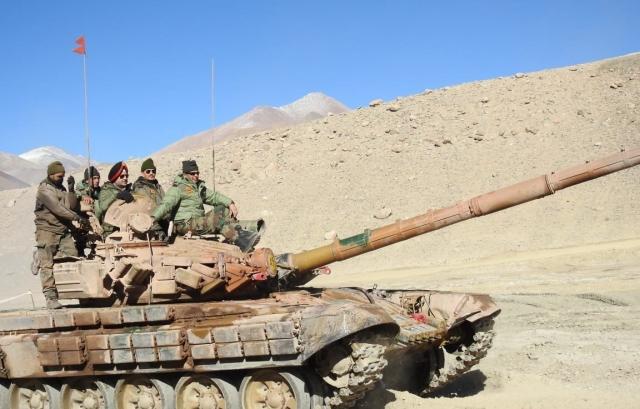
 www.indiasentinels.com
www.indiasentinels.com
Many of our readers, by now, know about the exploits of Brigadier Rupinder (RJS) Dhillon(retired) as a daring paratrooper. However, a little-known aspect of him is that Brig Dhillon has an excellent “feel of feet” of the line of actual control (LAC) in Ladakh – all the way from the Karakoram Pass down to Galwan valley. His stint with the Ladakh Scouts gave him a unique exposure along the LAC and “across”!
He is one of the few officers who has personally visited the sites of our defeat in 1962, across the LAC, like JAK-I and JAK-II.
Against the backdrop of gloom along the LAC these days, we asked him about our options. As China’s People’s Liberation Army sits pretty in our areas, on the wrong side of the LAC, in several places, we have chosen the path of lengthy negotiations. Until now, except for Galwan, the talks don’t seem to have made any headway.
Retired senior officers are talking about either evicting them physically, with the obvious costs, or gaining bargaining leverage against the PLA, through other means. And these “other means” can only be a quick counterincursion into Chinese territory, elsewhere, which can then be bartered for our areas where they are currently squatting. This is what Lieutenant General HS Panag (retired) said in an article, sometime back.
Brig Dhillon has a prescription. We must realize that he is talking of tactical possibilities and not certitudes. He is not abreast of the current order of battle (Orbat) of the combatants. Nor is he privy to their plans. But this is what he would do if he has the resources and the authority.
The area under this study:
This is the subsector north (SSN), the most northern part of our area adjacent to the LAC in Ladakh. North of Daulat Beg Oldi (DBO) camp site lies the strategically vital Karakoram Pass, leading to China’s vital interests (Xinjiang Highway: G-219 and other infrastructure beyond) on the other side. And to the west-south-west, lies the Siachen Glacier, vital to our interests. (Illustration via Quint)
Brig Dhillon gives his perspective on gaining leverage against the PLA for restoring parity at the negotiations, as follows:
1. A coordinated and quietly built-up, multi-pronged series of incursions, overnight.
2. A move northwards from DBO, across the Karakoram Pass and beyond. This will point a dagger at China’s vital Xinjiang Highway (G-219). Dhillon, having personally served there, says, the Karakoram Pass is passable for BMPs and Ts (T-90s/T-72s).
3. An integrated battle group (IBG) consisting of:
a. One battalion less of two companies of BMP-borne mechanized infantry
b. One squadron of tanks.
c. One company of engineers. (Engineering effort, blasting, etc, maybe required on the approach to the Karakoram Pass, the last bit above the hitching point of about 300 feet below the pass. The pass itself doesn’t require any effort, on our side; perhaps some negligible effort on the Chinese side.)
d. One battalion of “footie footies” (infantry)
These can go across the pass and occupy a convenient feature on the other side. Then they will sit tight, forcing the PLA to react – either through an assault or through negotiations. This is one area where the Chinese simply cannot allow our presence for any length of time.
At the same time, the force shouldn’t be large enough to spook the Chinese over the tipping point and force them to go for all-out war.
4. The reserves to be held at DBO are:
a. One tank regiment (less one squadron); two BMP companies.
Here Brig Dhillon insists that BMPs are adequate for armoured in Ladakh and there is no need really to miss the “light tanks”, which are being suddenly discussed now. He says that during the time when they were testing high-altitude para operations in Ladakh, in the late 1980s, he had watched Gen Panag’s mechanised combat group in action across all kinds of terrain. That has given him the firm belief that BMPs would be adequate and effective for our purpose.
While the northern IBG goes across the Karakoram Pass, Brig Dhillon wants a simultaneous move down south. He recommends a company strength feint from our Burtse camp towards the Y junction. Noisy, but not engaging the enemy.
The real action should be in the form of a three pronged assault to interdict the PLA’s line of communications from their “new encampment” across the LAC, which serves as a firm base for all their troop movements towards our SSN area. Thus, if that line is cut off by us across the LAC, then their forces which have come into our side, at the Y Junction, would be cut off and vulnerable.
The three prongs would be:
1. A battalion sized move from DBO south eastwards.
2. A Company-sized move via our track junction (highly exposed with concealment of larger numbers difficult.)
3. Another two companies moving over Depsang-la, going down to the Chip Chap river and onwards into the Depsang plains.
He insists that none of these moves should be deep. The features occupied across the LAC should be maintainable by surface convoys (mules, vehicles), except for one stretch beyond the Depsang-la, which should be maintained by helicopters.
Next, he is absolutely insistent on close support from attack helicopters (Apaches). He says the army should request the government to prevail upon the Indian Air Force to go beyond their doctrinaire objections to close ground support operations. This is a prerequisite for success.
Stealth and surprise should be ensured through night movements, during the build-up stage. The incursion should be completed overnight, with prefab (pre-fabricated) concrete structures (for roofing and side walls) being carried to quickly build bunkers.
The right locales and features should be chosen to occupy, keeping in mind that in the mountains, a 9:1 or even 12:1 force ratio is required for the side attacking, to dislodge a fortified, dug in defending force.
This, if accomplished, will force the Chinese to respond. One, they can choose to attack and risk a spiralling escalation OR consider the restoration of status quo ante elsewhere along the LAC, where they have encroached into our areas viz., Pangong-tso, Y Junction, Gogra–Hot Springs, etc.
Others veterans, say that we simply do not have the strength today to match the PLA in the open.
Gen Panag, in his latest article, says: “In execution, it implies fortifying the DBO-Galwan Sector, Hot Springs-Gogra-Kongka La-Tsogtsalu sector and Marsimik La-Ane La-Phobrang-Fingers 1-3 sector with overwhelming resources that must have an inbuilt tactical counter-offensive capability. The defences and habitat should be of a permanent nature. These sectors should be prepared to fight even when isolated. Main defences on Ladakh and Pangong Ranges must continue to be manned. Our reserves must be arrayed for an operational-level counter-offensive in Chushul/Indus river valley/Chumar sectors.”
Thereby, he rules out any offensive possibilities in sectors other than Chushul, Indus river valley and Chumar. He sees fortified defences as the only feasible option, in other areas to the north.
In that case, a disruptive move on our part in the SSN, may invite massive Chinese counterattacks, which we would have to find a way to withstand.
Brig Dhillon also warns of a supply of body bags to be kept ready if we venture across the LAC. His solution is that our moves, as described at the beginning, should be shallow enough to be maintainable and not pose too serious a threat to China. While being critical enough to pinch.
This would be a mind game. The Chinese would have to decide between the advantages of deliberate and costly escalation, with incalculable consequences and restoring status quo ante, this time around, while preparing for the “real thing”, at some point in the future.
We must realize that war is the last option. And yes, there is an asymmetry today vis a vis China. So then if the Chinese do not move back and restore status quo ante, are we prepared to countenance the loss of a substantial chunk of territory? Or should we risk a bloodbath, which may lead to a repeat of 1962?
“The nation wants to know!”

India’s options around LAC: Going north with Brigadier RJS Dhillon
Lieutenant General Ranbir Singh, former commander of the Northern Army, on a tank in Ladakh. (Representative image via Northern
Jay99
New Member
- Joined
- Mar 28, 2017
- Messages
- 505
- Likes
- 1,383
Agreed but looking at the current standoff..New Delhi doesn't have an appetite further offensive other than status quo ante..Nothing is distant, if are aware of the consequences and are willing to accept them.
- Joined
- Jul 12, 2014
- Messages
- 32,663
- Likes
- 151,106
Yup, what you are saying is dovetailing into what I am saying.Agreed but looking at the current standoff..New Delhi doesn't have an appetite further offensive other than status quo ante..
could be that, GoI probably thinks the possible set of consequences are not worth the risk at the moment. we don’t know.
Then again, this game will last atleast a decade, this is just the beginning. it’s not just about India-China, it’s largely about China & many countries.
Sanglamorre
New Member
- Joined
- Apr 4, 2019
- Messages
- 5,968
- Likes
- 27,171
China sent a huge fishing fleet, yes, not a few fishing boats but a whole fleet like a CBG to plunder waters off Ecuadorian coast.Ecuador is in South America right ?
- Status
- Not open for further replies.
| Thread starter | Similar threads | Forum | Replies | Date |
|---|---|---|---|---|
|
|
India-China 2020 Border conflict | Indian Army | 29497 | |
| V | Non-Military implications of India-China Standoff 2020 | China | 61 | |
|
|
Memes & Jokes India China Standoff 2020 | Members Corner | 334 | |
|
|
India to overtake China in 2020: Swaminathan Aiyar | Economy & Infrastructure | 33 |
Articles
-
India Strikes Back: Operation Snow Leopard - Part 1
- mist_consecutive
- Replies: 9
-
Aftermath Galwan : Who holds the fort ?
- mist_consecutive
- Replies: 33
-
The Terrible Cost of Presidential Racism(Nixon & Kissinger towards India).
- ezsasa
- Replies: 40
-
Modern BVR Air Combat - Part 2
- mist_consecutive
- Replies: 22
-
Civil & Military Bureaucracy and related discussions
- daya
- Replies: 32
